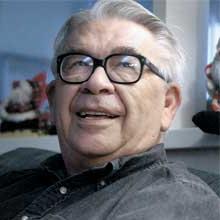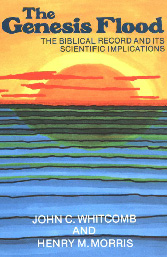 W
WYoung Earth creationism (YEC) is a form of creationism which holds as a central tenet that the Earth and its lifeforms were created in their present forms by supernatural acts of a deity between approximately 6,000 and 10,000 years ago. In its most widespread version, YEC is based on the religious belief in the inerrancy of certain literal interpretations of the Book of Genesis. Its primary adherents are Christians who believe that God created the Earth in six days, in contrast with old Earth creationism (OEC), which holds literal interpretations of Genesis that are compatible with the scientifically determined ages of the Earth and universe.
 W
WAnswers in Genesis (AiG) is an American fundamentalist Christian apologetics parachurch organization. It advocates Young Earth creationism on the basis of its literal, historical-grammatical interpretation of the Book of Genesis and the Bible as a whole. Out of belief in biblical inerrancy, it rejects the results of those scientific investigations that contradict their view of the Genesis creation narrative and instead supports pseudoscientific creation science. The organization sees evolution as incompatible with the Bible and believes anything other than the young Earth view is a compromise on the principle of biblical inerrancy.
 W
WArk Encounter is a Christian religious and creationist theme park that opened in Grant County, Kentucky in 2016. The centerpiece of the park is a large representation of Noah's Ark based on the Genesis flood narrative contained in the Bible. It is 510 feet (155 m) long, 85 feet (26 m) wide, and 51 feet (16 m) high.
 W
WConservapedia is an English-language wiki encyclopedia project written from a self-described American conservative and fundamentalist Christian point of view. The website was established in 2006 by American homeschool teacher and attorney Andrew Schlafly, son of the conservative activist Phyllis Schlafly, to counter what he perceived as a liberal bias in Wikipedia. It uses editorials and a wiki-based system for content generation.
 W
WThe Creation Research Society (CRS) is a Christian fundamentalist research group that requires of its members belief that the Bible is historically and scientifically true in the original autographs, belief that "original created kinds" of all living things were created during the Creation week described in Genesis, and belief in flood geology.
 W
WA creationist museum is a facility that hosts exhibits which use the established natural history museum format to present a young Earth creationist view that the Earth and life on Earth were created some 6,000 to 10,000 years ago in six days. These facilities generally promote pseudoscientific Biblical literalist creationism and contest evolutionary science, which has led to heavy criticism from the scientific community.
 W
WVine Victor Deloria Jr. was a Native American author, theologian, historian, and activist. He was widely known for his book Custer Died for Your Sins: An Indian Manifesto (1969), which helped attract national attention to Native American issues in the same year as the Alcatraz-Red Power Movement. From 1964 to 1967, he had served as executive director of the National Congress of American Indians, increasing tribal membership from 19 to 156. Beginning in 1977, he was a board member of the National Museum of the American Indian, which now has buildings in both New York City and Washington, DC.
 W
WFlood geology is the attempt to interpret and reconcile geological features of the Earth in accordance with a literal belief in the global flood described in Genesis 6–8. In the early 19th century, diluvial geologists hypothesized that specific surface features provided evidence of a worldwide flood which had followed earlier geological eras; after further investigation they agreed that these features resulted from local floods or from glaciers. In the 20th century, young-Earth creationists revived flood geology as an overarching concept in their opposition to evolution, assuming a recent six-day Creation and cataclysmic geological changes during the Biblical Deluge, and incorporating creationist explanations of the sequences of rock strata.
 W
WThe Genesis Flood: The Biblical Record and its Scientific Implications is a 1961 book by young Earth creationists John C. Whitcomb and Henry M. Morris that, according to Ronald Numbers, elevated young Earth creationism "to a position of fundamentalist orthodoxy."
 W
WThe Geoscience Research Institute (GRI) is a creationist institute of the Seventh-day Adventist Church founded in 1958 and located on the campus of Loma Linda University in California.
 W
WGrand Canyon: A Different View is a 2003 book edited by Tom Vail. The book features a series of photographs of the Grand Canyon illustrating 20 essays by creationists Steve Austin, John Baumgardner, Duane Gish, Ken Ham, Russell Humphreys, Henry Morris, John D. Morris, Andrew A. Snelling, Larry Vardiman, John Whitcomb, and Kurt Wise. It presents the Young Earth creationist perspective that the canyon is no more than a few thousand years old and was formed by the Global Flood or Noachian flood of the Bible.
 W
WThe Institute for Creation Research (ICR) is a Creationist apologetics institute in Dallas, Texas that specializes in media promotion of pseudoscientific creation science and interpretation of the Genesis creation narrative as a historical event. The ICR adopts the Bible as an inerrant and literal documentary of scientific and historical fact as well as religious and moral truths, and espouses a Young Earth creationist worldview. It rejects evolutionary biology, which it views as a corrupting moral and social influence and threat to religious belief. The ICR was formed by Henry M. Morris in 1972 following an organizational split with the Creation Science Research Center (CSRC).
 W
WThe International Conference on Creationism (ICC) is a conference in support of young earth creationism, sponsored by the Creation Science Fellowship (CSF). The first conference occurred in 1986 at Duquesne University in Pittsburgh. Subsequent conferences have been held in 1990, 1994, 1998, 2003, 2008, 2013 and 2018.
 W
WIs Genesis History? is a 2017 American Christian film that uses the pseudoscience of creation science to promote Young Earth creationist beliefs that contradict established scientific facts regarding the origin of the Universe, the age of the Earth, and the common descent of all lifeforms.
A Matter of Faith is a 2014 American Christian drama film directed by Rich Christiano and starring Harry Anderson, Jordan Trovillion, Jay Pickett, and Clarence Gilyard. The film was released into theaters on October 17, 2014 by Five & Two Pictures. The film follows a Christian student and her father (Pickett) who are challenged by a biology professor (Anderson) who teaches evolution.
 W
WIn cryptozoology, the Mokele-mbembe is a water-dwelling entity that lives in the Congo River Basin, sometimes described as a living creature, sometimes as a spirit.
 W
WThe Museum of Earth History is a controversial young Earth creationist museum based on fundamentalist Christian theology. It features replicas of dinosaur skeletons in exhibits and the Book of Genesis biblical scripture.
 W
WRed Earth, White Lies: Native Americans and the Myth of Scientific Fact is a book by Native American author Vine Deloria, originally published in 1995. The book's central theme is to criticize the scientific consensus which has, in his words, created "a largely fictional scenario describing prehistoric North America".
 W
WIn creationism, special creation is a theological doctrine which states that the universe and all life in it originated in its present form by unconditional fiat or divine decree.
 W
WThe Ussher chronology is a 17th-century chronology of the history of the world formulated from a literal reading of the Old Testament by James Ussher, the Archbishop of Armagh and Primate of All Ireland. The chronology is sometimes associated with young Earth creationism, which holds that the universe was created only a few millennia ago by God as described in the first two chapters of the biblical book of Genesis. Ussher fell into disrepute in the 19th century.